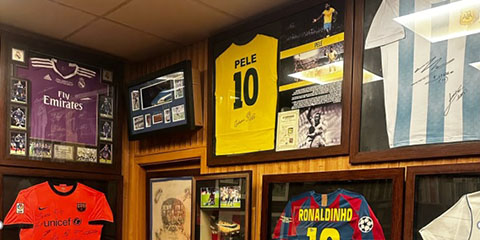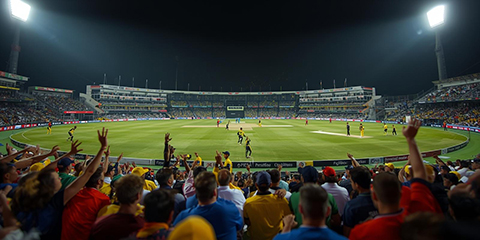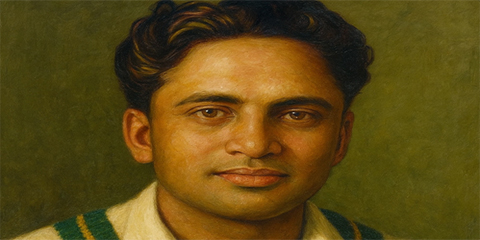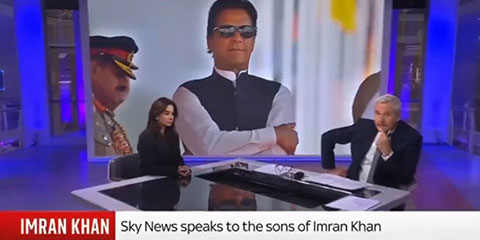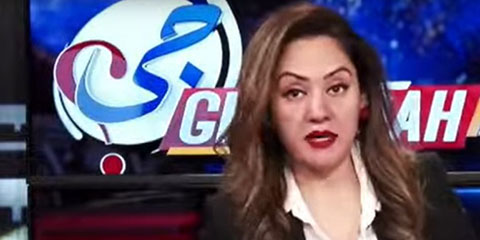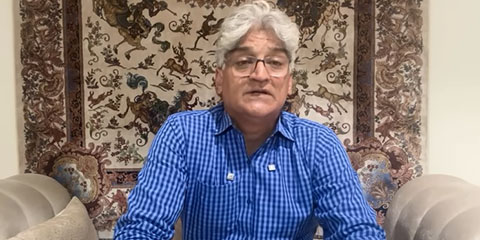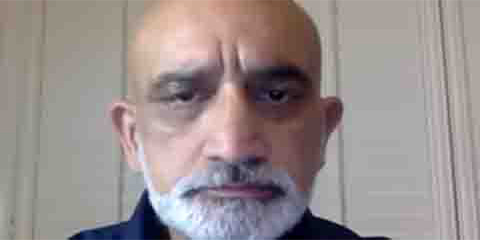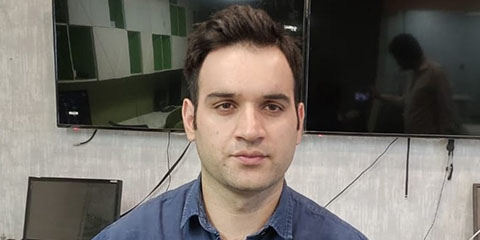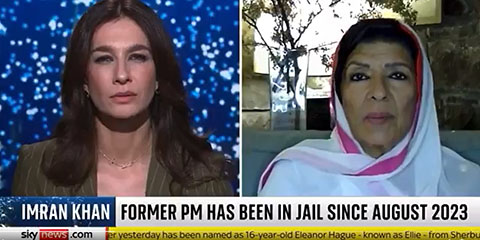From fire to ashes: How Pakistan's cricket revolution became a bureaucratic funeral
JournalismPakistan.com | Published 4 months ago | Dr. Nauman Niaz (TI)
Join our WhatsApp channel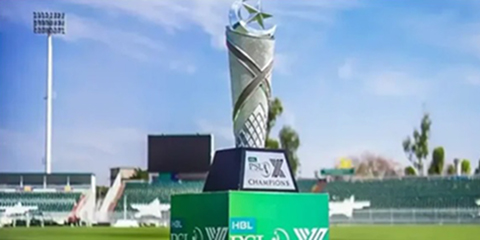
ISLAMABAD—There was a time, not in the distant haze of sepia-tinted memory but not quite yesterday either, when the Pakistan Super League felt like a revolution unfolding in real time. Not in statistics, or retweets, or shiny post-match montages drowned in synth beats. No. It lived deeper, in the heart, our product and social introduction to the world. It was like incarnating Pakistan cricket. It lived in how cities breathed differently in February. It was lyrical, but not the kind you memorise. This was cricket's new verse: raw, uneven, trembling with the kind of beauty only chaos can compose. Karachi did not just cheer; it erupted. Lahore bared its teeth. Rawalpindi snarled, Multan pulsed with a menace that came not with noise, but weight. The PSL wasn't just watched, it was worn, like a scent, like a flag wrapped tight around a heartbeat. Now? It flickers. A candle guttering in a room where no one notices the dark arriving. A league that once roared has begun to mumble.
From Revolutionary Vision to Recycled Energy
It was, at its birth, the crest of a wave, a proud, defiant banner of Pakistani ingenuity, daring to carve out its place in T20's glittering, fast-forward future. Not a mimicry of the IPL, nor a shadow of the BBL, but something else entirely. A Pakistani rhythm. A lurching, romantic, unpredictable masterpiece. But now it returns each year like an obligation. Six weeks of muscle memory. Six weeks of recycled energy. A ghost of its former self, briefly lit by nostalgia, limping toward hashtags no one believes in, anthems no one sings after the first chorus, and storylines stuck in loops.
The Hollow Architecture of Mismanagement
This isn't about talent. Talent, still, is abundant; Pakistani cricket is nothing if not gifted in the raw. But no league survives on talent alone. It needs scaffolding. It needs soul. And above all, it needs sense. The PSL, for all its early promise, is collapsing under its own hollowed architecture papered over with mismanagement and laced with the kind of internal compromise that turns empires to dust. Behind the suits and the presentations and the tight-lipped press releases lies a truth no one wants to say out loud: this is a league adrift.
The Economics of Decline
Franchises bicker behind closed doors. Boards operate in shadows. Contracts are written with vanishing print. Broadcasting rights, those glittering tokens of league maturity, were sold at feverish, inflated prices, less a financial strategy, more an ego contest. And the numbers that once made eyes widen now make stomachs drop. Because the product no longer justifies the price. It can't. The audiences have diminished, not dwindled, not dipped, evaporated.
Stadiums now echo with absence. Television metrics, once the drumbeat of relevance, feel like relics from another timeline. You cannot televise passion. Not if you don't evoke it. Not if you've forgotten how.
Nostalgia as Currency: The Dangerous Trap
What lingers like smoke is the league's memory of itself. Those first three seasons, how they shimmered. When every game in Sharjah felt like a rebellion. When Karachi vs Lahore wasn't branding, it was blood. When players came not just for pay, but for legacy. When even the doubters tuned in, heart grudgingly softened by a six that made history feel close again. That era wasn't built on perfection; it was built on becoming. But the PSL mistook its early thunder for immortality. It mistook novelty for growth. It stopped walking and started posing.
The World Moved, the PSL Stood Still
The world moved. The game evolved. Data sculpted selection. Auctions became theatre. Franchises turned into global brands. America made a league. Saudi Arabia flirted with cricket's crown jewels. And the PSL? It stood still, waiting for old magic to perform new tricks. Same format. Same timing. Same faces. Same anthem. Innovation seen not as a door, but as a threat. Once upon a time, foreign stars brought sheen. They lent glamour, validation, coverage. Now, they politely decline. Not because Pakistan isn't welcoming. Not even because of safety. But because the money's better elsewhere, the exposure wider, the machinery smoother. The PSL, now, is where second-tier mercenaries find game time and domestic hopefuls chase flickers of fame. But the marquee names? They're already booked. And the fans? They notice. They always notice.
Disconnection from the People
And perhaps this is the most crushing truth: the league no longer mirrors its people. Once, it pulsed with the rhythms of its cities, each team a vessel for its street, its slang, its swagger. The PSL was once as local as chai and as volatile as traffic. Now, it floats above the cities, detached. The young fan, sharp-eyed, quick-fingered, emotionally reckless, he wants more than sixes. He wants cinema. He wants chaos and clarity. He wants meaning in every powerplay. But what he gets is a dusty calendar invite. An app notification. A game.
Ritual Without Religion
The PSL has become a ritual without religion. A shell that appears once a year, heavy with expectation and hollow with delivery. No academies feeding the pipeline. No women's league. No off-season engagement. No summer leagues. No merchandising that makes you feel part of a tribe. It comes. It plays. It leaves. It forgets. And in that forgetting, it teaches its fans to do the same. This is not death. But it is dying. Not with a gunshot, but with an unanswered call. Not with fire, but with disinterest. A league once born from resilience is now tethered to repetition. It hoped its legacy would sustain it, but legacy is a myth without motion. What remains is a question. An undertone, a hush. A slow fade. A memory of what it felt like when Wahab bowled that last over. When Darren Sammy danced. When Sharjeel Khan exploded. When the anthem meant something. The tree still stands. But it blooms a little less each year. And in that quiet decay, the PSL writes its most tragic end yet.
The Forgetting
Now, it's forgetting. Slowly, but unmistakably. Like an old anthem you once knew by heart but can no longer sing past the first verse. The Pakistan Super League, once the boldest declaration of a cricketing nation daring to belong to the future, now returns each year like a guest no one remembers inviting, late, stiff, unsure of its place at the table. It emerges for six weeks, cloaked in old songs and borrowed light, glimmering only because it still carries the scent of when it mattered. Then it vanishes into silence, into irrelevance, leaving behind a digital graveyard of stale hashtags and anthem wars that ring hollow, like a trumpet blown underwater.
The Disease of Bureaucracy
This league, which once felt like fire on the fingertips, now feels like vapour slipping through them. It began not in the twilight of Test match honour but under the clinical, fluorescent hum of modernity's most unforgiving format. It was never meant to romanticise the past. The PSL was always about reinvention, Pakistan's promise that it too could mould this beast called T20 in its tumultuous image. For a while, it did just that. There was a swagger, a rawness, a kind of elegant chaos that couldn't be replicated. But what once felt like divinity now feels like repetition. And repetition, without imagination, is the slowest kind of death.
The IPL Contrast: A $18.5 Billion Juggernaut
It is hard now to think of the Indian Premier League as only a cricket tournament. Calling it that is like calling the monsoon a weather event, or a qawwali just a song. The IPL, in its 2025 incarnation, is no longer just a league; it is a living, breathing behemoth, a cyclone of commerce, culture, and competition, drenched in colour and saturated with spectacle. It is the most complete expression of what cricket has become in the 21st century: not only a sport, but a billion-dollar proposition dressed in the skin of entertainment, driven by data, and choreographed like theatre.
It stands today at a staggering total value of US$18.5 billion, a figure that no longer astonishes but simply confirms what everyone already knows. That cricket, once India's pastime, has become its most lucrative national asset. That the IPL is not just leading the global cricket economy; it is the global cricket economy. With a 12.9% year-on-year growth, the league isn't just thriving, it is evolving, metastasising into newer forms, newer screens, newer markets. And every season is not a continuation—it is a reinvention.
The Economics of Excellence
The brand value of the league, divorced from its operational assets, sits at US$3.9 billion, an empire unto itself. These are numbers that, once upon a time, belonged only to American sports monoliths and Silicon Valley unicorns. Now they belong to cricket. To India. To a league born in controversy but matured into inevitability. Even its franchises, those city-based avatars of a deeper emotional geography, now command valuations that mimic startup valuations. Royal Challengers Bangalore, once romantic underachievers, have ascended to the summit at US$269 million, eclipsing even Chennai Super Kings, whose yellow has long been synonymous with dynastic dominance. CSK remains mighty at US$122 million, Mumbai Indians not far behind at US$119 million, and Kolkata Knight Riders, a team that embodies transformation, crossing the US$100 million mark. Sunrisers Hyderabad, long viewed as peripheral, now burns bright with the fastest growth, reaching US$85 million and climbing.
Media Rights and Digital Dominance
But these are not just numbers. They are declarations. Of ambition. Of marketing genius. Of the financial machinery that hums behind every delivery bowled. The soul of this commercial engine lies, arguably, in the IPL's media rights deal. Between 2023 and 2027, it is expected to funnel US$6.2 billion into the ecosystem, more than double the revenue of previous cycles. In a landscape where attention is the scarcest commodity, the IPL commands it like a hypnotist. It does not ask for your gaze; it possesses it. The 2025 season shattered digital records. Over 1.37 billion views on JioCinema during the opening weekend alone. A peak of 340 million digital viewers. These are not sports figures; these are civilizational numbers. Moments not just watched, but participated in-tweeted, clipped, meme'd, lived.
The Auction as Theatre
The auction is not administrative; it is a theatre. A festival of valuation, where franchises gamble futures on hunches and algorithms. It is where strategy waltzes with spectacle. Where analysts sit beside CEOs, and a hammer raised in the air becomes a nation's heartbeat. This is where value is discovered, year after year, in the fluid marketplace of talent. Where a teenager from Aligarh becomes a millionaire before lunch, and an Australian all-rounder finds his price not in merit alone but in how he fits a spreadsheet and a dream.
The PSL's Fatal Flaws
There was always something elemental about the Pakistan Super League when it was born. A spark struck in the dark, a league that clawed its way into being not through cash-rich boardrooms or clean investor decks, but through a nation's aching hunger for modernity — for something that said Pakistan could do it too. It could produce a cricketing spectacle without borrowing from anyone's playbook. For a while, it even worked. It wasn't perfect, but it was alive.
The Governance Crisis
The PSL's governance structure, too, is a study in compromise, not strategy. At the top sits a legal mind, trained in compliance, not competition. A league is not a courtroom, and cricket is not a contract. Yet, the PSL is run like a legal filing, paragraph by paragraph, clause by clause, with imagination redacted. Under such stewardship, innovation suffocates. Expansion stalls. And rules bend not toward progress, but towards appeasement.
Commercial Blindness and Missed Opportunities
Franchise owners, instead of acting as partners in a professional ecosystem, behave like territorial governors. Their interference in operations has created a culture of selective enforcement, one where certain teams live by different rules, enforced by convenience and proximity, not policy. Favouritism becomes folklore. Integrity dissolves in silence. And then, there's the matter of commercial blindness. When the moment came to grow to invite new investors, to increase the league's footprint, the PSL shrank. It allowed existing franchises to retain rights at a meager 20% premium instead of reopening the gates for market bidding.
Saudi Arabia's Silent Revolution
They were watching the wrong fires. As the world of cricket shifted beneath their feet, the custodians of the Pakistan Super League kept their gaze fixed inward, squabbling over old turf, rearranging old deals, protecting old interests. Meanwhile, elsewhere, tectonic plates were moving. Silent. Inevitable. In the golden halls of Riyadh and Jeddah, beneath the looming shadow of Vision 2030, Saudi Arabia quietly placed its first stones into cricket's foundation. Not with a league, not with a press release, but with a spectacle. The IPL auction, for the first time, was hosted beyond India's borders. It wasn't just a bidding war; it was a declaration. A shift in gravity.
The Final Verdict
This is what happens when those with fogged lenses and shallow credentials are handed the keys. When the unprofessional, the pliant, the unimaginative are allowed to run a product not because they deserve to but because they serve those who must be served. This is what happens when decisions are made not in boardrooms but in drawing rooms, not for the league but for the leverage. When honest professionals, the ones who know, who care, who bleed for the badge are sidelined in favour of the ever-available, ever-obedient clique. When men with no ideas but too many contacts rise, and those with vision are told to wait in silence.
It happens when the intellectually dishonest are allowed to ascend, not by merit but by favour, and when the product itself becomes collateral damage, buried beneath personal whims, petty fiefdoms, and rank incompetence. The PSL is not a league anymore; it's a liability wearing the costume of legacy. And unless someone screams into the silence, unless someone burns the rot before it spreads further, we are watching the quiet funeral of Pakistan's last great sporting invention. The closure is not coming. It has already begun. Soon, the title sponsors and others will start shying away, in search of returns on their investments.
Dr. Nauman Niaz is a civil award winner (Tamagha-i-Imtiaz) in Sports Broadcasting & Journalism, and is the sports editor at JournalismPakistan.com. He is a regular cricket correspondent, having covered 54 tours and three ICC World Cups, and having written over 3500 articles. He has authored 15 books and is the official historian of Pakistan Cricket (Fluctuating Fortunes IV Volumes - 2005). His signature show Game On Hai has been the highest on ratings and acclaim.




